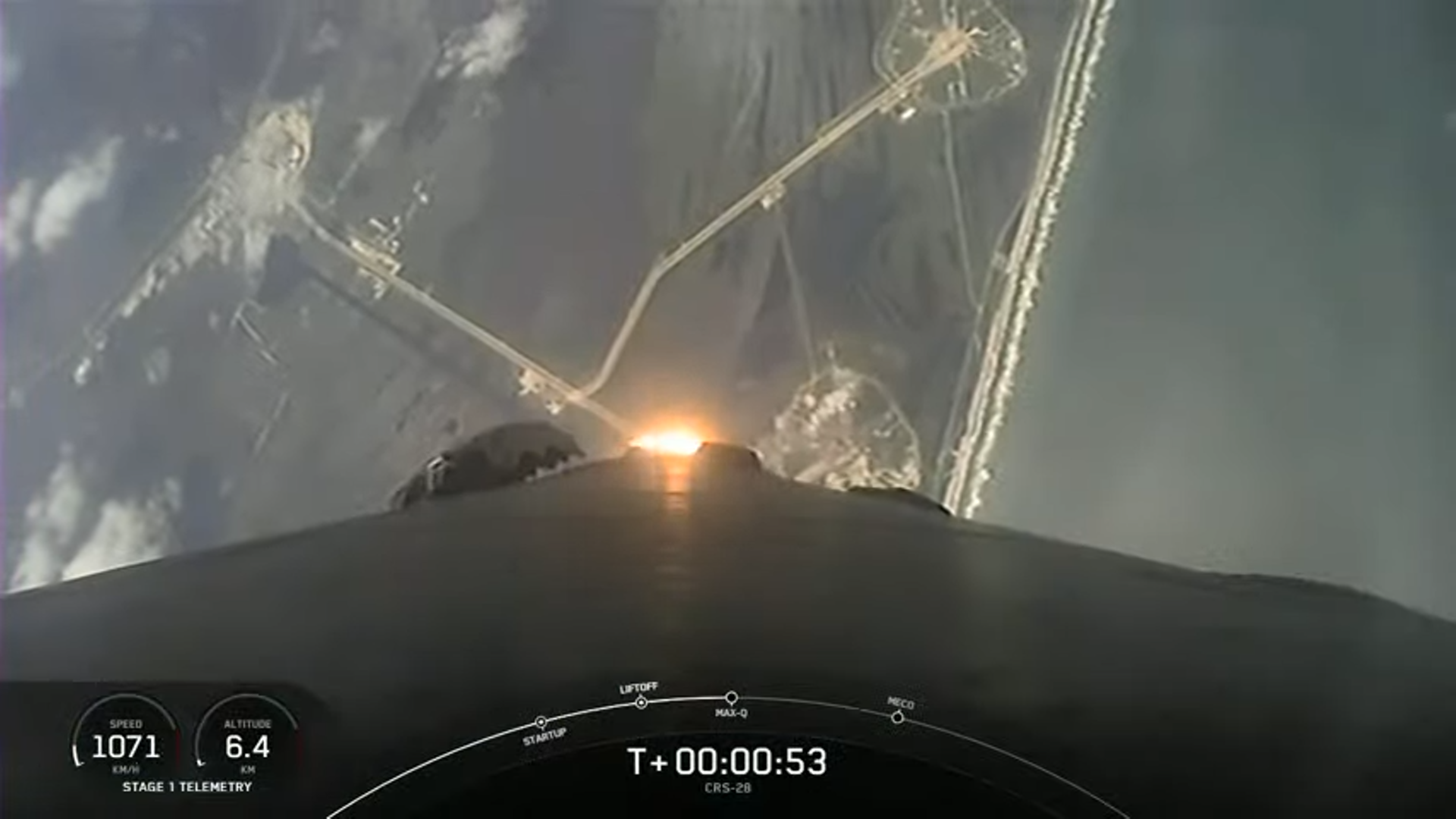
The first four-times-flown Cargo Dragon, laden with over 7,000 pounds (3,200 kilograms) of equipment, supplies and 31 research payloads for the International Space Station (ISS), took flight from historic Pad 39A at Florida’s Kennedy Space Center (KSC) at 11:47 a.m. EDT Monday. The “C208” cargo ship—which supported three prior uncrewed visits to the station in 2020, 2021 and last summer—will spend about 18 hours in transit, ahead of docking at the space-facing (or “zenith”) port of the Harmony node at about 5:50 a.m. EDT Tuesday for a scheduled three-week stay. The launch came on the third attempt, after opportunities were waived off over the weekend, due to poor weather conditions.
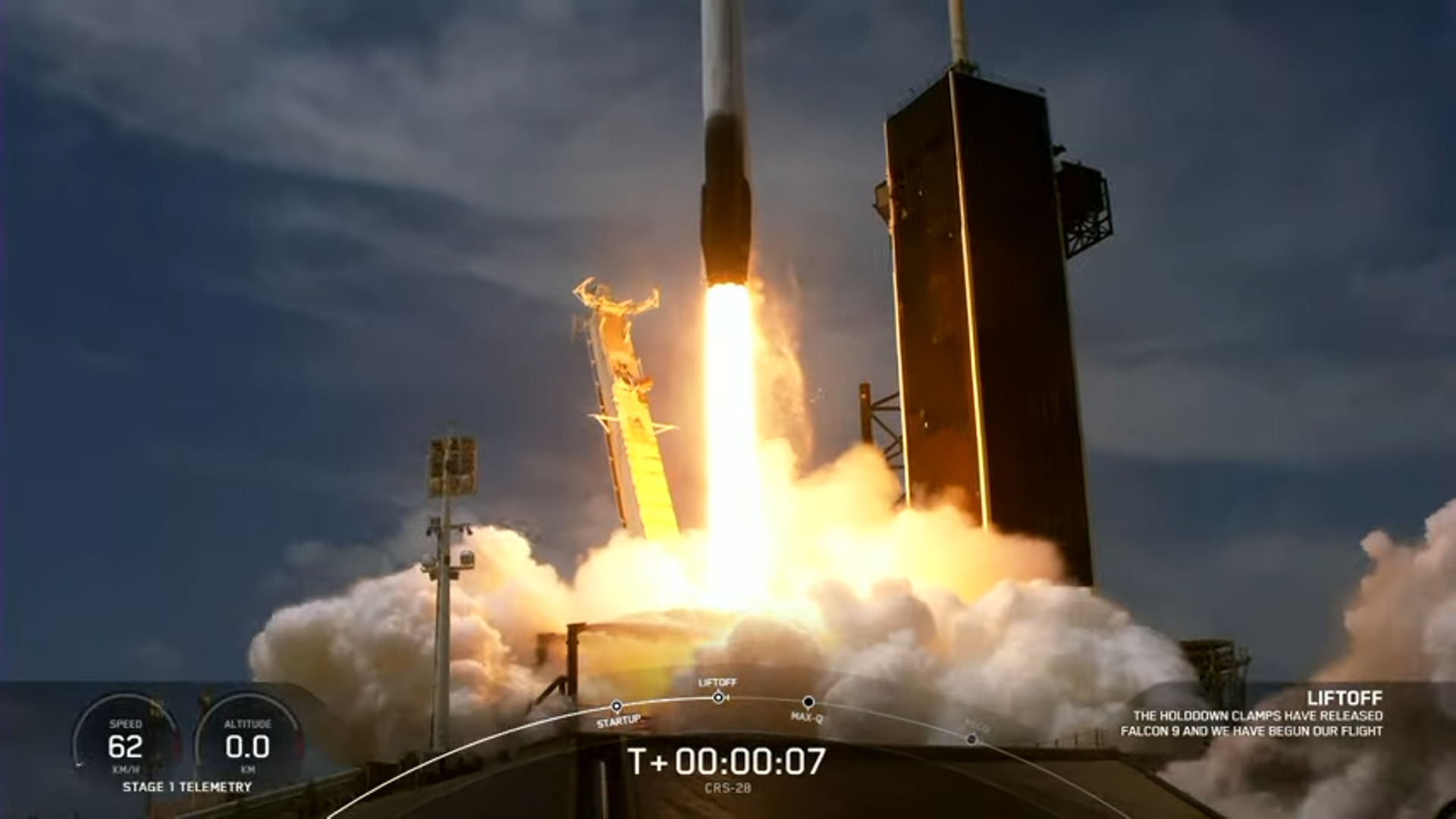
Monday’s liftoff marks the second Falcon 9 flight of a busy June, which is expected to see up to eight for customers ranging from Germany’s Armed Forces, the Space Development Agency (SDA), Indonesia’s Pasifik Satelit Nusantara (PSN) and SpaceX’s own rapidly growing flotilla of Starlink low-orbiting internet communications satellites. With this morning’s flight, SpaceX has already flown 38 Falcon-class vehicles—including a pair of triple-barreled Falcon Heavies—inside 2023’s first six months.
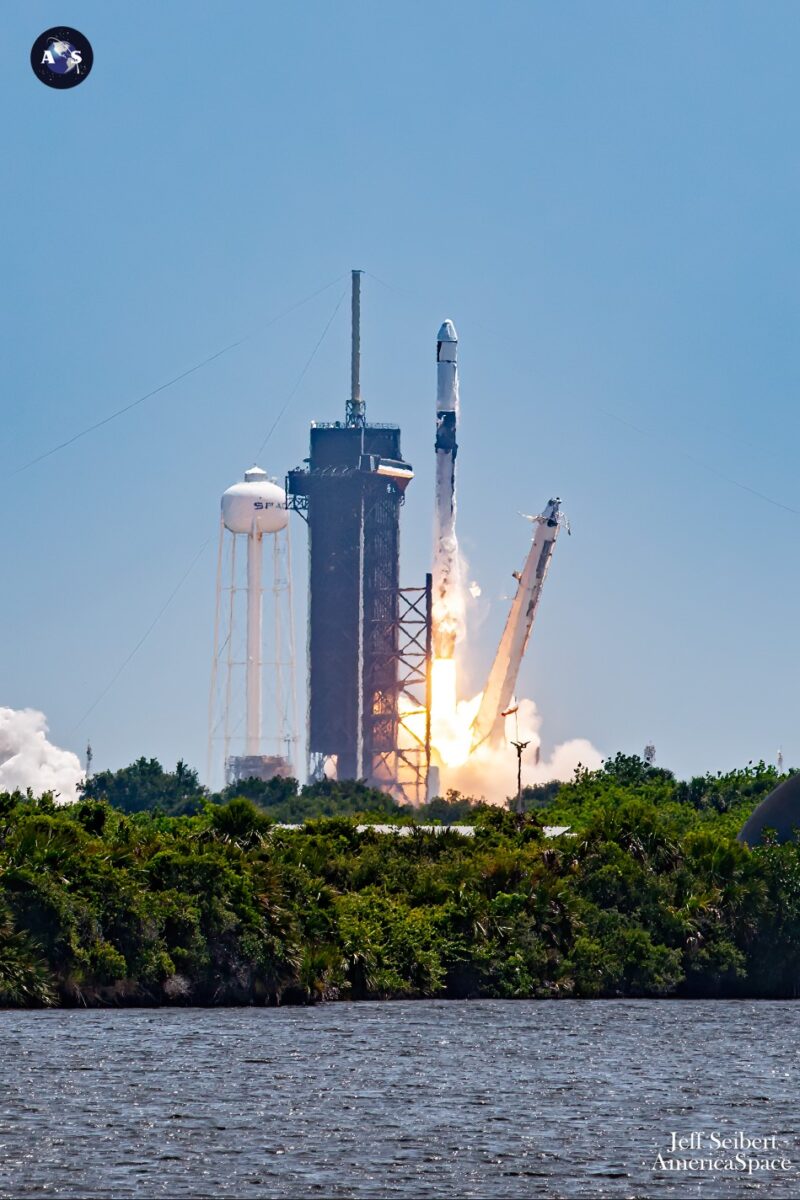
Even last year’s record-setting 61-strong haul of flights took SpaceX until mid-August to reach 38 launches. And in 2021, the Hawthorne, Calif.-based organization managed 31 launches across an entire calendar year, an indicator of its rapidly increasing flight cadence and growing confidence as reusability statistics creep upward. Averaging a launch every 4.1 days, compared to one every 11.8 days in 2021 and one every 5.9 days last year, this accomplishment edges SpaceX ever closer to CEO Elon Musk’s goal of up to a hundred flights by the end of 2023.
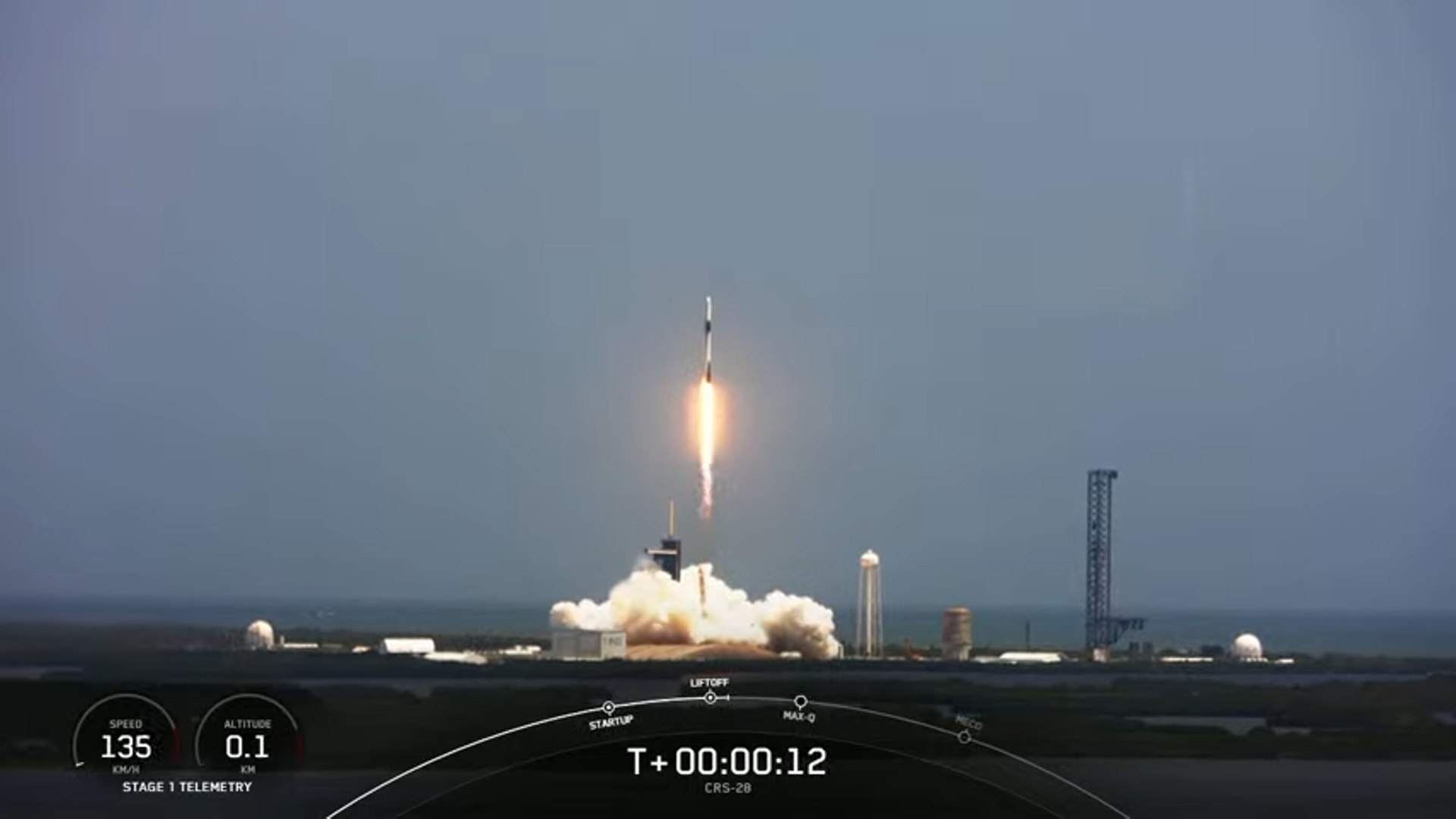
Weather for the weekend presented a pessimistic picture, however, with barely a 30-percent likelihood of being acceptable for the “instantaneous” launch windows at 12:35 p.m. EDT Saturday and 12:12 p.m. EDT Sunday, improving to only 50-50 for a third opportunity at 11:47 a.m. EDT Monday. The culprit is a phase of onshore-moving showers and storms, a situation not aided by Tropical Storm Arlene in the eastern Gulf of Mexico.
“The Spaceport will see continue to see periods of onshore-moving showers and storms, with the potential for persistent heavier bands to setup,” noted the 45th Weather Squadron at Patrick Space Force Base in an L-1 update on Friday. “Going into the primary launch window midday Saturday, the main weather concern will be these convergent shower bands moving into the Spaceport in the moist northeasterly flow.”
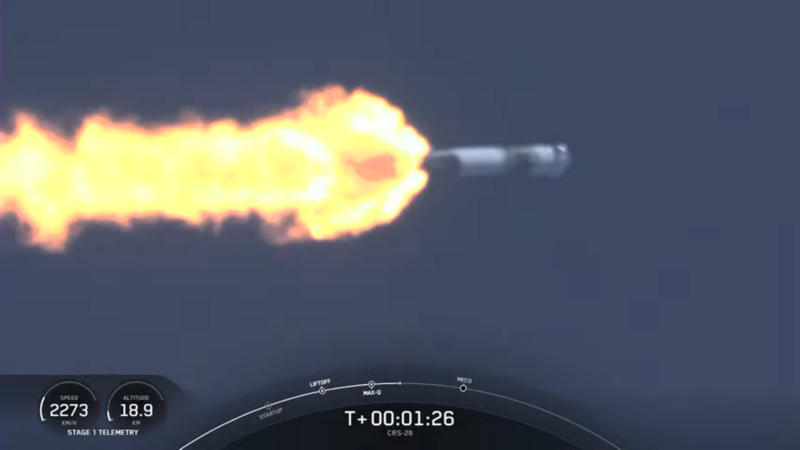
Unsurprisingly, Saturday’s opening launch opportunity was called off, “to allow more time for vehicle preparations and for weather conditions to improve”, according to SpaceX, as teams aligned to the backup attempt on Sunday. And by late Saturday, the weather picture for Sunday had notched up slightly to 40-percent-favorable, thanks to a trend for “a little less precipitation”, before an anticipated improvement to 60-percent-favorable by Monday and 90-percent-favorable by Tuesday.
Ultimately, however, Sunday’s attempt was called off due to high winds in the booster recovery area. With another Falcon 9 having successfully flown earlier in the day—battling significant weather odds—this caused SpaceX to miss out on setting a new record of only three hours and 52 minutes between a pair of launches. But as launch time neared on Tuesday, the weather dramatically improved to 80-percent-favorable.
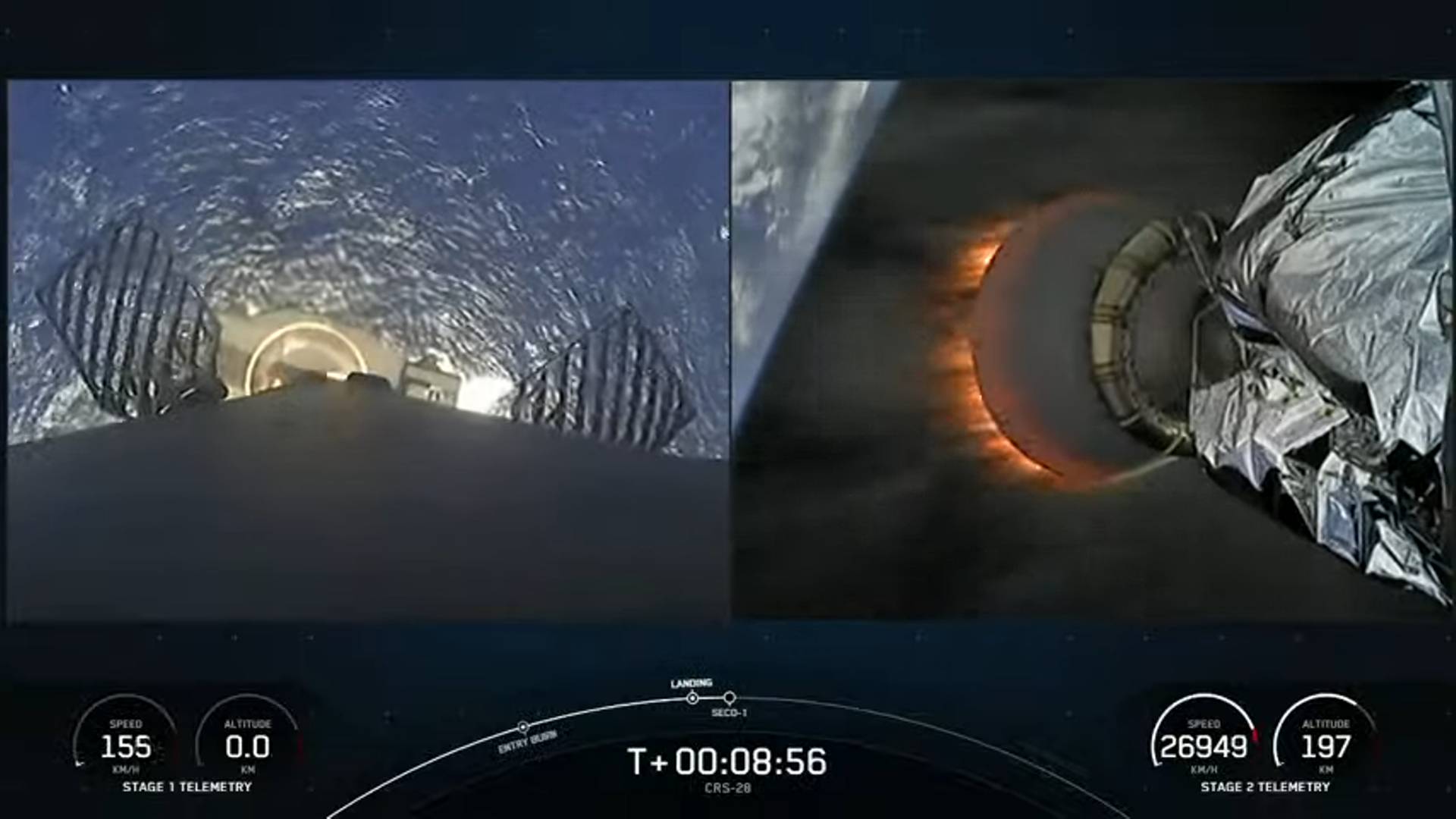
Flying today’s mission was the veteran B1077 booster, which entered service last October to lift Dragon Endurance and her Crew-5 quartet of NASA astronauts Nicole Mann and Josh Cassada, Japan’s Koichi Wakata and Russian cosmonaut Anna Kikina to the ISS. The four spacefarers went on to spend more than five months in orbit on Expedition 67/68.
B1077 went on to log three more flights earlier in 2023. She launched the sixth Global Positioning System (GPS) III navigation and timing satellite for the U.S. Space Force in January, the heavyweight Inmarsat 6-F2 communications satellite in February and a 56-strong batch of Starlinks in March.
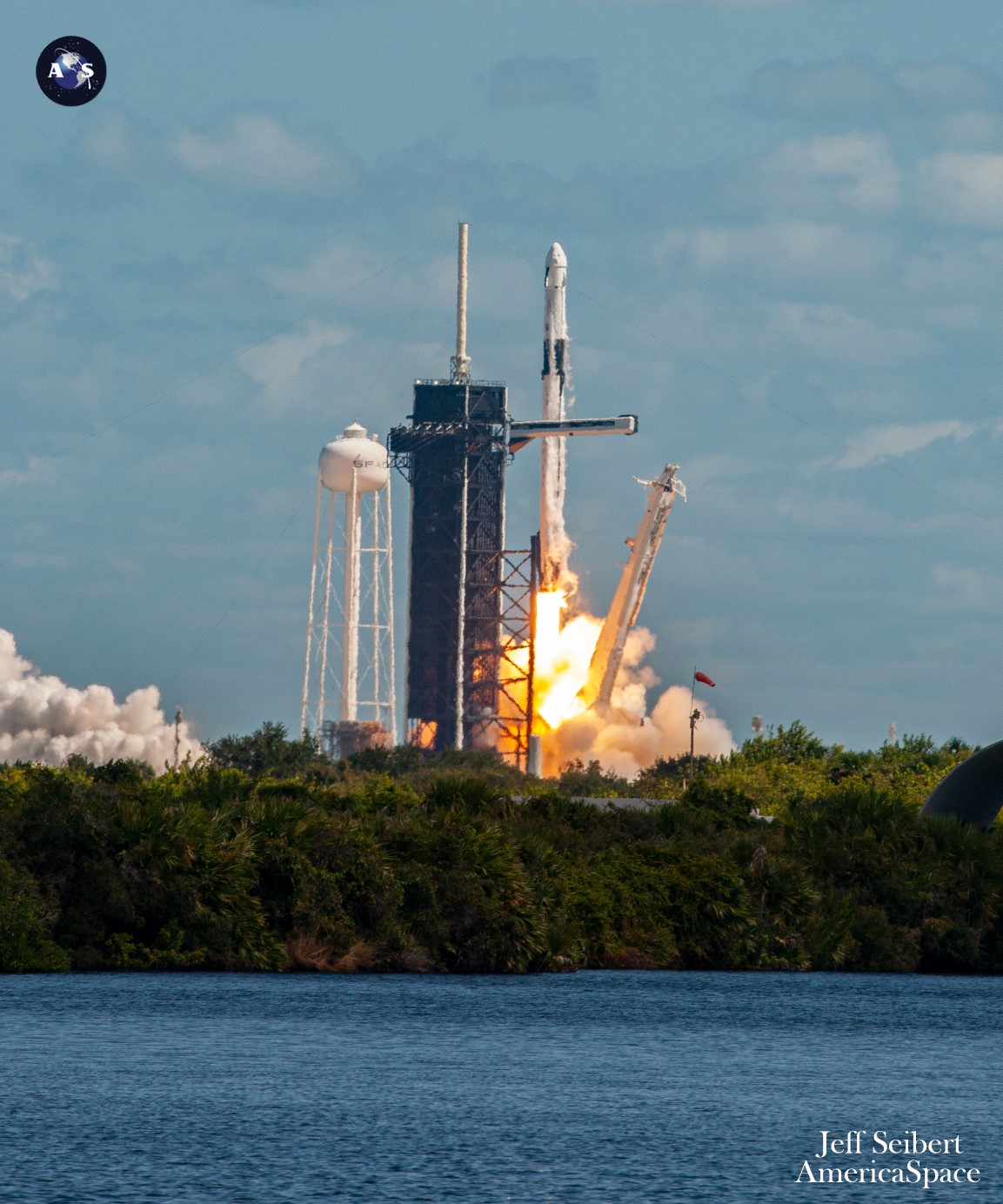
Also a seasoned veteran was the Cargo Dragon herself. Codenumbered “C208”, she entered service in December 2020 and became the first Cargo Dragon to autonomously dock—rather than be grappled and “berthed” using the Canadarm2 robotic assets—at the station.
After wrapping up her month-long CRS-21 mission in mid-January 2021, she flew again the following August on CRS-23 for a five-week ISS stay. Most recently, she launched a third time last July and returned home a month later.
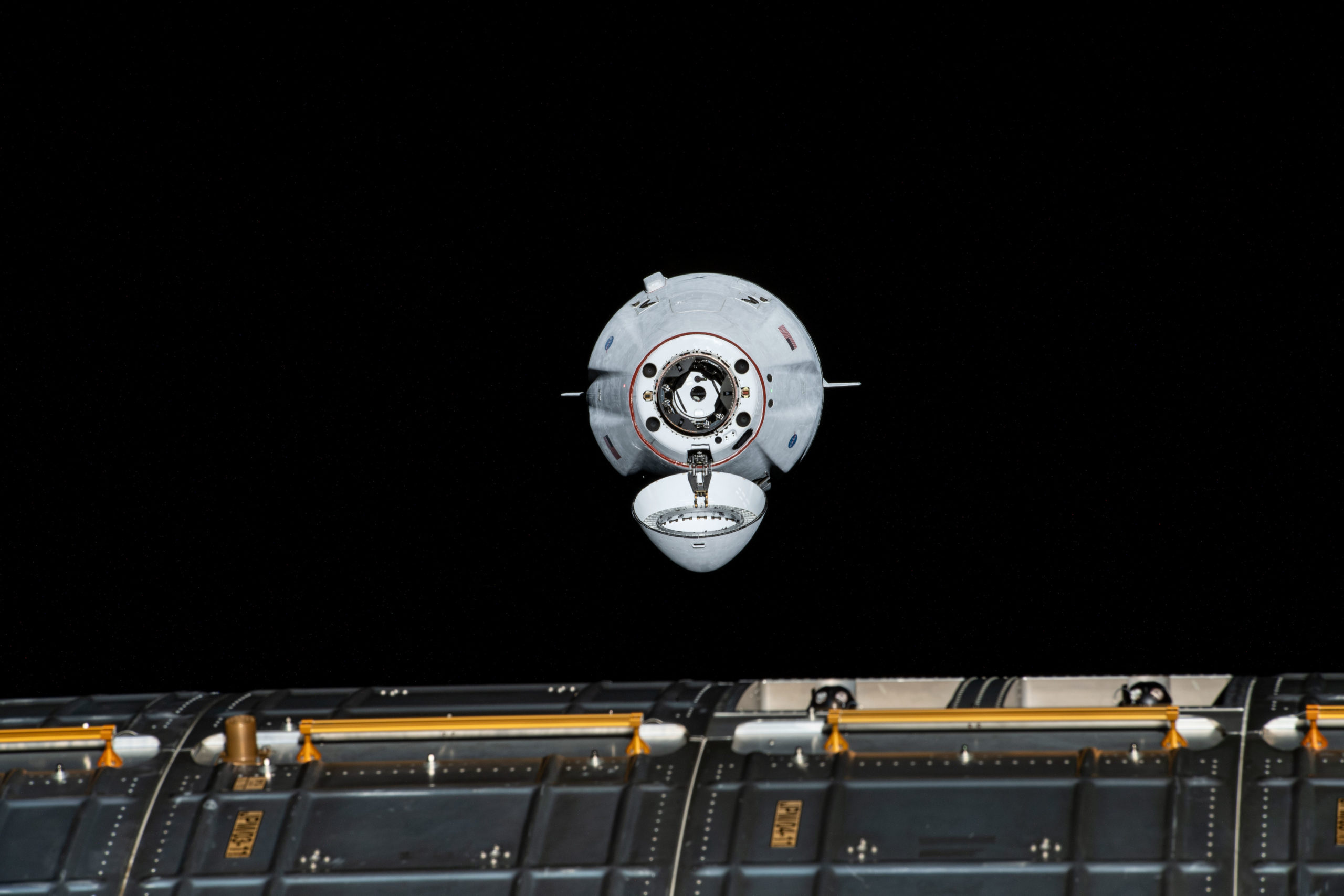
Across those three missions, C208 lifted a total of 15,300 pounds (6,900 kilograms) of equipment, payloads and supplies to the station and returned more than 13,000 pounds (5,900 kilograms) of hardware and research samples back to Earth. On her record-setting fourth trip for a Cargo Dragon, her payload haul tips the scales at 7,284 pounds (3,304 kilograms) and notably includes a third pair of Boeing-built ISS Roll-Out Solar Arrays (iROSAs) to augment the station’s power-generation capabilities.
Breaking down CRS-28’s haul, C208 carries 2,420 pounds (1,098 kilograms) of crew supplies, 586 pounds (266 kilograms) of science investigations, 106 pounds (48 kilograms) of EVA equipment, 1,082 pounds (491 kilograms) of vehicle hardware and 9 pounds (4 kilograms) of computer resources. When the mission returns to Earth in late June, it will bring home carbon dioxide samples, a Charcoal Bed Assembly and External High-Definition Camera Assembly for refurbishment and repair, as well as several other pieces of hardware to reduce stowage needs aboard the station.
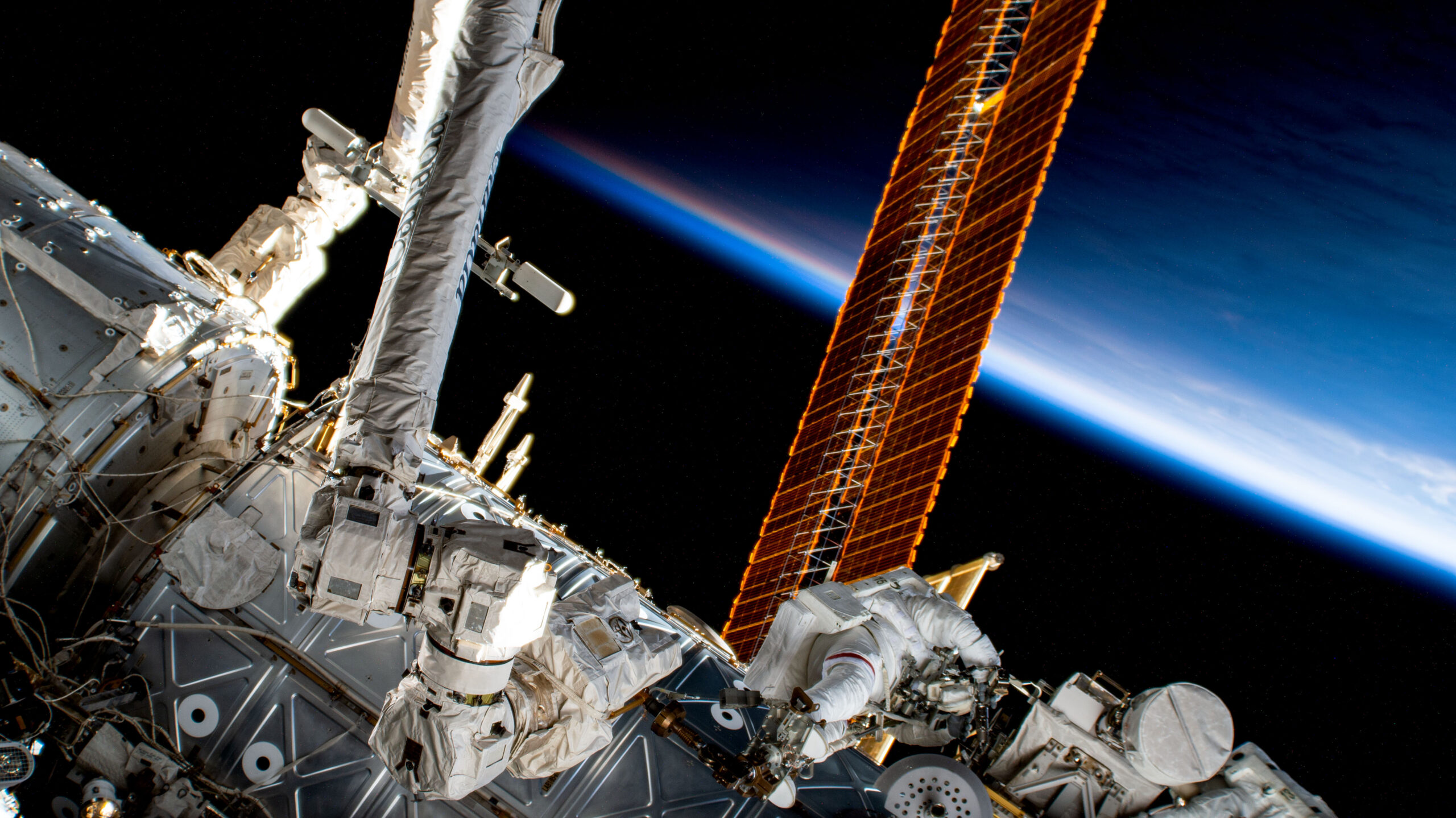
Overseeing CRS-28’s arrival at around 5:50 a.m. EDT Tuesday will be Expedition 69 astronaut Warren “Woody” Hoburg, who will monitor its approach and docking from the multi-windowed cupola. The Cargo Dragon must dock at the zenith port of the Harmony node, in order that the iROSA pallet can be reached and extracted as soon as 7 June for emplacement on the station’s truss to await installation.
As early as 9 June, Hoburg and fellow NASA astronaut Steve Bowen will execute the first of a pair of 6.5-hour sessions of Extravehicular Activity (EVA) to install the two new iROSAs onto a pair of existing power channels on the station’s starboard truss: one atop Power Channel 1A on the S-4 truss, the other on Power Channel 1B on the S-6 truss. Both channels received iROSA “modification kits” earlier this spring and cables and insulation were laid during a recent U.S. EVA in late April.
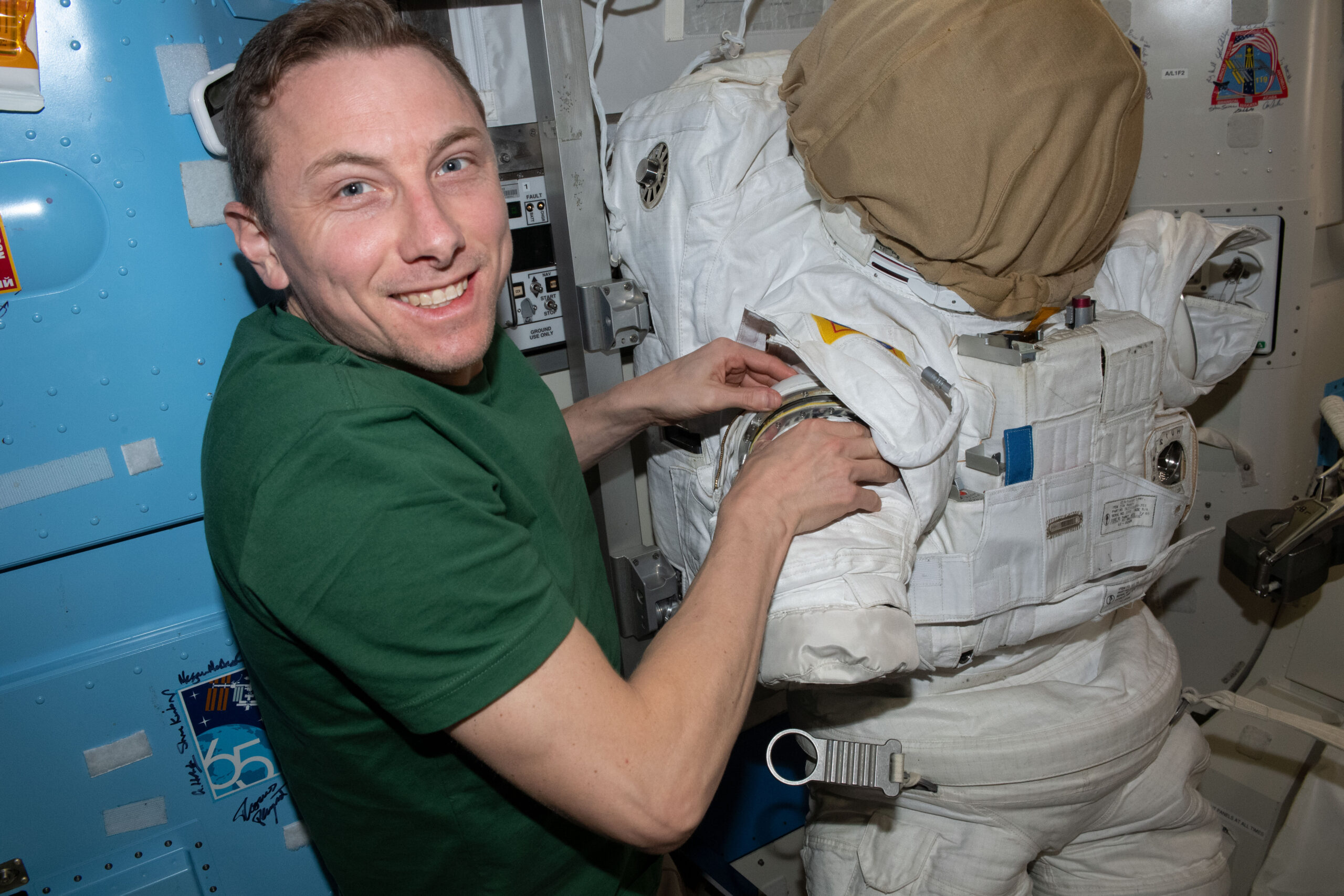
This will mark the third pair of iROSAs to overlay, and “shadow”, six of the eight “legacy” ISS Solar Array Wings (SAWs), which were delivered to the station by the Space Shuttle between November 2000 and March 2009. The new arrays will support future ISS expansion and customers’ burgeoning payload needs by increasing total electrical output by more than 30 percent, from 160 kilowatts to 215 kilowatts.
In readiness for the first EVA, last Friday Bowen and Hoburg worked to configure their space suits and tools in the station’s airlock. Hoburg also performed a fit-check of his suit and Expedition 69 crewmates Frank Rubio and Sultan Al-Neyadi worked on procedures for their assigned Canadarm2 duties during the EVA. The duo will also work to suit up Bowen and Hoburg before the EVA.
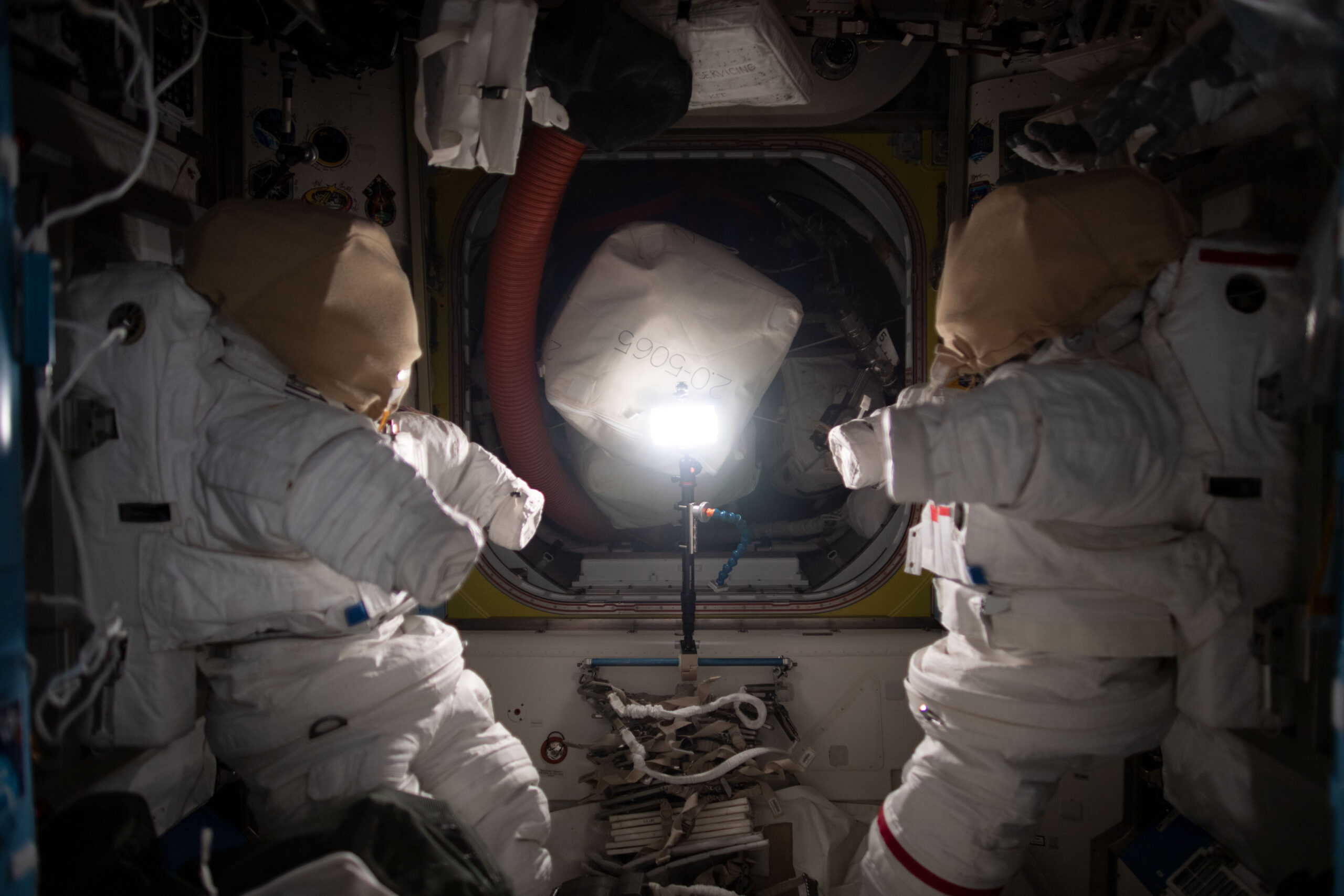
Also aboard CRS-28 are a range of research payloads, including Plant Habitat-3 (PH-3), led by teams at the University of Florida, which seeks to assess if plants grown in space can transfer their genetic adaptations to the next generation of plants and if any observed changes continue or stabilize. The Genes in Space-10 investigation will test techniques for measuring the length of “telometers”: genetic structures which protect human chromosomes and are known to shorten with age-related wear.
NanoRacks are providing a pair of CubeSats for future deployment from the station. One will observe arctic ice, permafrost thaw, forests and Canada’s northern extremities using a fisheye camera and algorithms for greater spacecraft control, whilst the other will study the “weathering” of geological samples from direct solar and cosmic background radiation to assess the visibility of changes over short time scales.
Elsewhere, the European Space Agency (ESA) has provided its Thor-Davis experiment to examine thunderstorms from low-Earth orbit, with particular emphasis upon inception, frequency and altitude of recently discovered blue discharges. Current expectations are for CRS-28 to remain docked at the ISS for 21 days, with the cargo ship’s departure and return to Earth tentatively scheduled for the end of June.




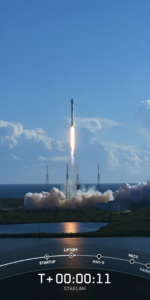
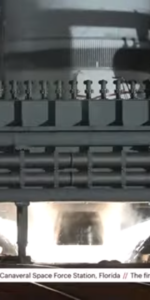
11 Comments
11 Pings & Trackbacks
Pingback:SpaceX Aims for Monday Launch Double-Header - AmericaSpace
Pingback:SpaceX Aims for Sunday Sunset Launch of Indonesia’s Satria Geostationary Mission - AmericaSpace
Pingback:SpaceX Launches Indonesian Satellite, Weather 75% Favorable for Penultimate Delta IV Heavy - AmericaSpace
Pingback:SpaceX, ULA Target Thursday Pre-Dawn Launches, Six Minutes Apart - AmericaSpace
Pingback:SpaceX Wraps Up Busy June, Looks Ahead to 1 July Euclid Launch - AmericaSpace
Pingback:SpaceX, ULA Launch Missions, 119 Minutes Apart - AmericaSpace
Pingback:50th Falcon Mission of 2023 Flies, Falcon Heavy Realigns for Friday Night Launch - AmericaSpace
Pingback:SpaceX Readies for First August Launch Tonight, as Crew-7 NET Date Slips - AmericaSpace
Pingback:SpaceX Begins August, Reflects on Quarter-Millennium of Launches - AmericaSpace
Pingback:SpaceX Targets 12 months’s fiftieth Falcon 9 Launch Tonight - technewscombomber.in
Pingback:SpaceX Launches Year’s 80th Mission, Space Station Cargo Flight Up Next - AmericaSpace